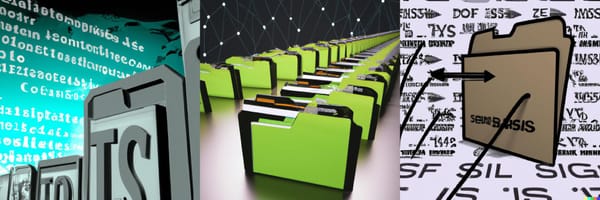Mounting LUKS-Encrypted Drives with LVM in Windows / WSL

What is LUKS?
LUKS (Linux Unified Key Setup) is a standard for disk encryption in Linux. It provides a secure way to encrypt your data at the block device level, ensuring that your data remains private even if the physical drive is lost or stolen. LUKS is widely adopted because of its flexibility, strong security, and seamless integration with Linux systems.
Key features of LUKS include:
- Encryption at the Block Level: LUKS encrypts the entire block device, not just individual files, making it secure and comprehensive.
- Multiple Key Slots: You can set up multiple passphrases or keys to unlock a single LUKS partition, which is useful in shared systems.
- Interoperability: LUKS works well across different Linux distributions.
Mounting LUKS-encrypted drives with LVM in Windows Subsystem for Linux (WSL) can be intimidating if you’re doing it for the first time. The process has a few quirks and commands that can trip you up, especially when you're dealing with logical volumes. In this guide, I’ll walk you through the entire process step-by-step, explain the commands, and cover potential pitfalls and fixes.
Identify the Disk in Windows
Before anything, we need to figure out which disk to work with.
Open PowerShell and run:
Get-CimInstance -Query "SELECT * from Win32_DiskDrive"
This will list all the physical drives connected to your system. Look for the disk that corresponds to your LUKS drive. If you have multiple disks, cross-check using Disk Management in Windows:
- Press
Win + X→ Select Disk Management. - Find the disk number that matches the size and characteristics of your target disk.
Mount the Disk in WSL
Once you have the disk ID (e.g., \\.\PHYSICALDRIVE1), mount it in WSL as a bare device:
Open PowerShell and run:
wsl --mount \\.\PHYSICALDRIVE1 --bare
Inside your WSL terminal (e.g., Ubuntu), list the available devices:
lsblk
Look for your disk. It will appear as something like /dev/sdX (e.g., /dev/sdd). Note this path for the next step.
Open the LUKS Partition
If your disk is LUKS-encrypted, you need to "unlock" it using cryptsetup. Install cryptsetup if it’s not already installed:
sudo apt update
sudo apt install cryptsetupNow unlock the LUKS partition:
sudo cryptsetup luksOpen /dev/sdX my-device
Replace /dev/sdX with the actual device path (e.g., /dev/sdd). This command opens the encrypted partition and maps it to /dev/mapper/my-device.
Determine the Filesystem Type
At this point, you need to figure out what’s on the partition. If it’s a standard ext4 filesystem, you can mount it directly. However, if it’s part of a Logical Volume Manager (LVM), there are extra steps.
What is a Logical Volume?
Logical Volume Manager (LVM) is a storage management system that allows for flexible and advanced disk partitioning. Instead of dividing a disk into fixed partitions (like /dev/sda1), LVM introduces a more dynamic structure. Here’s how it works:
- Physical Volume (PV): These are your physical disks or partitions (e.g.,
/dev/sdaor/dev/sda1). - Volume Group (VG): A collection of one or more physical volumes grouped together into a storage pool.
- Logical Volume (LV): These are virtual partitions created from the storage pool, which can dynamically grow or shrink as needed.
Advantages of Logical Volumes
- Dynamic Resizing: You can resize logical volumes without unmounting the filesystem, making it ideal for production environments.
- Snapshot Support: LVM allows you to create snapshots of logical volumes, useful for backups and testing.
- Disk Spanning: Logical volumes can span across multiple physical disks, enabling larger storage pools.
- Improved Disk Usage: Unlike traditional partitions, LVM minimizes wasted space by allocating storage dynamically.
Operating Systems That Use LVM
- Linux: Most modern Linux distributions support LVM and even offer it as the default partitioning scheme during installation (e.g., Ubuntu, CentOS, RHEL).
- Unix Variants: Systems like AIX use similar logical volume systems.
- macOS: While not strictly LVM, macOS uses Core Storage and APFS, which offer similar functionalities.
- Windows: Windows does not natively support LVM but uses Dynamic Disks, which share some concepts.
If you’re working with LVM, the filesystem won’t be directly accessible. You’ll first need to scan for LVM volumes and activate them, which we’ll cover in the next section.
Try mounting it:
sudo mkdir -p /mnt/wsl/my-mountpoint
sudo mount /dev/mapper/my-device /mnt/wsl/my-mountpoint
If you see an error like:
unknown filesystem type 'LVM2_member'
It means you’re dealing with an LVM volume, and additional configuration is required.
Work with LVM
Logical volumes are like virtual partitions. To access the data, you need to "activate" them.
Install the LVM tools:
sudo apt install lvm2
Scan for LVM volumes:
sudo pvscan # Scans physical volumes
sudo vgscan # Scans volume groups
sudo lvscan # Scans logical volumes
These commands will list all physical volumes (PVs), volume groups (VGs), and logical volumes (LVs) on your disk.
Activate the volume group:
sudo vgchange -ay
Find the logical volume path:
sudo lvdisplay
You’ll see something like /dev/<volume-group-name>/<logical-volume-name>. This is the logical volume you’ll mount.
Mount the Logical Volume
Now that the logical volume is active, mount it using the path from the previous step:
sudo mount /dev/<volume-group-name>/<logical-volume-name> /mnt/wsl/my-mountpoint
Replace <volume-group-name> and <logical-volume-name> with the actual names.
Verify the mount:
df -h
ls /mnt/wsl/my-mountpoint
Accessing a WSL-Mounted Partition in Windows Explorer
Once you’ve successfully mounted a partition inside WSL, you might want to access it directly from Windows Explorer. This can be handy if you’re working across both environments or need to move files between Linux and Windows seamlessly. Here's how you can make that happen:
Step 1: Locate Your Mount Point in WSL
Assuming you’ve followed the steps above to mount your partition (e.g., to /mnt/wsl/my-mountpoint), confirm that it’s accessible within WSL:
ls /mnt/wsl/my-mountpoint
You should see the contents of your mounted partition.
Step 2: Determine the Windows Path
WSL exposes its Linux filesystem to Windows under a special network path. By default, any directory in WSL can be accessed through the path: \\wsl$\<distro-name>\<path>. If your WSL distribution is Ubuntu, and the partition is mounted at /mnt/wsl/my-mountpoint, its Windows Explorer path will be: \\wsl$\Ubuntu\mnt\wsl\my-mountpoint
Step 3: Open Windows Explorer
Open File Explorer in Windows.
In the address bar, type the WSL network path (e.g., \\wsl$\Ubuntu\mnt\wsl\my-mountpoint) and press Enter. If everything is set up correctly, you’ll now see the files and directories from your mounted partition.
Step 4: Create a Shortcut for Quick Access
For convenience, you can create a shortcut to the mounted partition:
- Right-click on an empty area in File Explorer and choose New > Shortcut.
- Enter the WSL path (e.g.,
\\wsl$\Ubuntu\mnt\wsl\my-mountpoint) when prompted. - Name the shortcut (e.g., "WSL Partition") and finish the wizard.
This shortcut will allow you to quickly access the partition from your desktop or any folder.
What If It Doesn’t Work?
Sometimes, accessing \wsl$ paths might fail due to configuration or service issues. Here are some troubleshooting tips:
1. Check if WSL is Running
Windows can’t access the \wsl$ paths unless the WSL instance is running. Launch WSL and verify it’s active by running:
wsl -l -v
Ensure your distribution is running (status should be Running).
2. Restart the LxssManager Service
The LxssManager service handles WSL operations. If the \wsl$ path isn’t working, try restarting the service:
- Open Run (Win + R), type services.msc, and press Enter.
- Locate LxssManager in the list.
- Right-click and choose Restart.
3. Ensure Windows File Sharing is Enabled
\\wsl$ relies on Windows networking features. Ensure file and printer sharing is enabled in your network settings.
Why Accessing from Windows is Useful
- File Management: Use Windows tools (e.g., Explorer, Notepad, VS Code) on files stored in your Linux partitions.
- Cross-Environment Collaboration: Seamlessly share files between Windows applications and Linux processes.
- Backup and Restore: Use Windows backup tools to create snapshots of your Linux-mounted partitions.
With these steps, you can fully leverage the power of WSL and integrate your Linux partitions into the Windows environment, bridging the gap between two worlds effortlessly!



